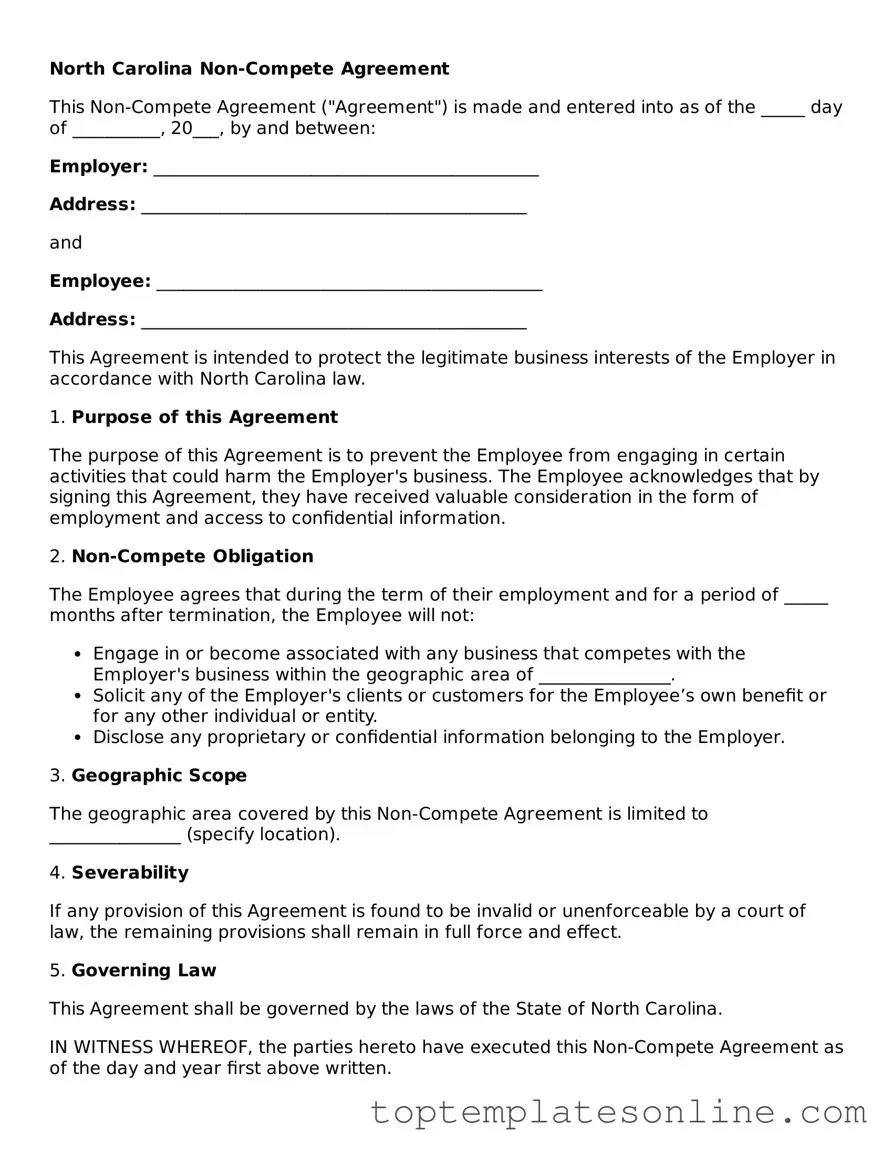The North Carolina Non-compete Agreement form serves as a crucial tool for employers and employees alike, facilitating the protection of business interests while also outlining the limitations placed on employees post-employment. This agreement delineates specific terms under which an employee may be restricted from engaging in similar work or starting a competing business within a defined geographical area and time frame. Key components of the form include the identification of the parties involved, the duration of the non-compete obligation, and the geographic scope of the restrictions. Additionally, it often addresses considerations such as the nature of the business interests being protected and the potential consequences for breach of the agreement. By establishing clear expectations and boundaries, this form helps to prevent unfair competition and safeguard proprietary information, ensuring that both parties have a mutual understanding of their rights and obligations. Understanding the nuances of this agreement is essential for anyone navigating the employment landscape in North Carolina.
